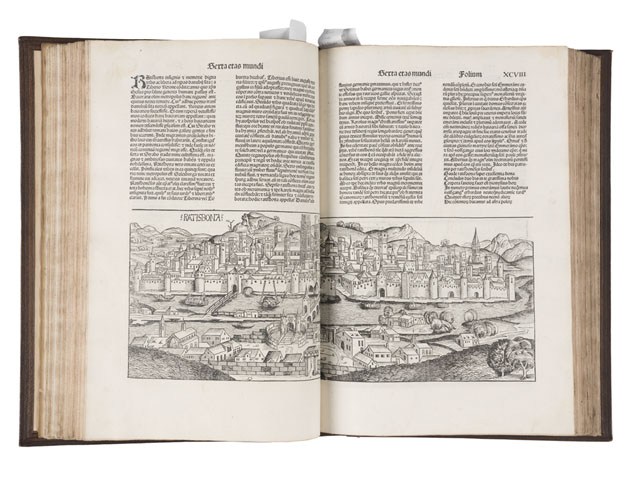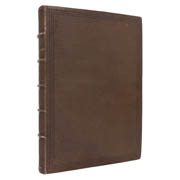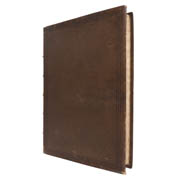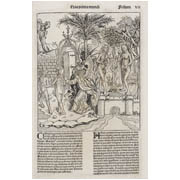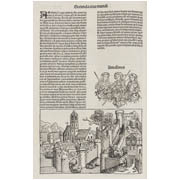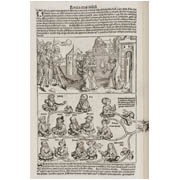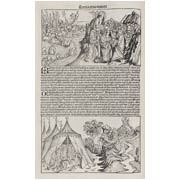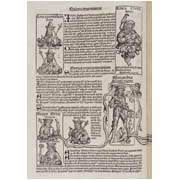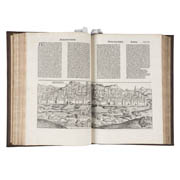Details
- Object type
book
- Title
Hartmann Schedel: World Chronicle
- Artist/Maker
- Place Associated
Germany, South Germany, Nuremberg (place of manufacture)
- Date
1493
- Materials
leather, wood, paper
- Dimensions
overall: 475 mm x 345 mm x 75 mm 7024 g
- Description
-
An early printed book (incunable), Hartmann Schedel’s ‘Liber Chronicarum‘, commonly known in English as the ‘Nuremberg Chronicle’, published by Anton Koberger of Nuremberg, Germany, 1493. Uncoloured print. Bound in a 19th century, brown Morocco leather cover.
The Nuremberg Chronicle is one of the best known and most documented early printed texts (Incunabula) of the fifteenth century. An ambitious project charting the history of the Christian world, from the Creation to the 1490s, and looking ahead to the Last Judgement, it is one of the largest and most extensively illustrated texts of the period.
The text was written by the German physician, humanist, and historian, Hartmann Schedel of Nuremberg (1440-1514), who worked under the commission of Nuremberg merchants, Sebald Schreyer (1446–1520) and Sebastian Kammermeister (1446–1503). His text is assembled from, and informed by, a number of classical and medieval sources. Schedel was an avid collector of books, his extensive library of 370 manuscripts and 460 printed books survives to this day, in the collection of the Bayerische Staatsbibliothek (Bavarian State Library), Munich, Germany.
The book is elaborately illustrated, comprising of over 1800 illustrations, drawn from approximately 650 individual woodcut blocks, executed by the Nuremberg artists, Michael Wolgemut (c. 1434-1519) and Wilhelm Pleydenwurff (circa 1460-1494), making it the most extensively illustrated book of the period. The remarkable illustrations depict Biblical characters and events, portraits of historical figures, rulers and popes, mythical species of humans, and topographical images of cities and countries - some spread impressively across double pages.
Schreyer and Kammermeister commissioned the Nuremberg printer and publisher, Anton Koberger (c.1440-1513), to produce the text. Koberger was one of the most successful printers of the day, operating the largest German printing house of the 15th century, perhaps running as many as 24 presses, and employing over 100 employees, to compile, print, publish, and sell his work internationally. He was responsible for printing some 200-250 different books, including the famous Koberger Bible of 1483 (see 4.1).
The Nuremberg Chronicle was produced in two editions, one in Latin and one in German. The Burrell copy is the Latin edition, printed in an estimated run of some 1500-2000 copies for distribution around Europe. The rarer German edition, translated and edited by Georg Alt (c. 1450-1510) was released to cater for a more localised literate, German, middle-class, and was printed in an estimated run of circa 700-1000 copies. Editions of both versions survive in great numbers to the present day and can be found in collections all over the world.
- Credit Line/Donor
Gifted by Sir William and Lady Burrell to the City of Glasgow, 1944
- Collection
Burrell Collection: Books
- ID Number
4.5
- Location
In storage
